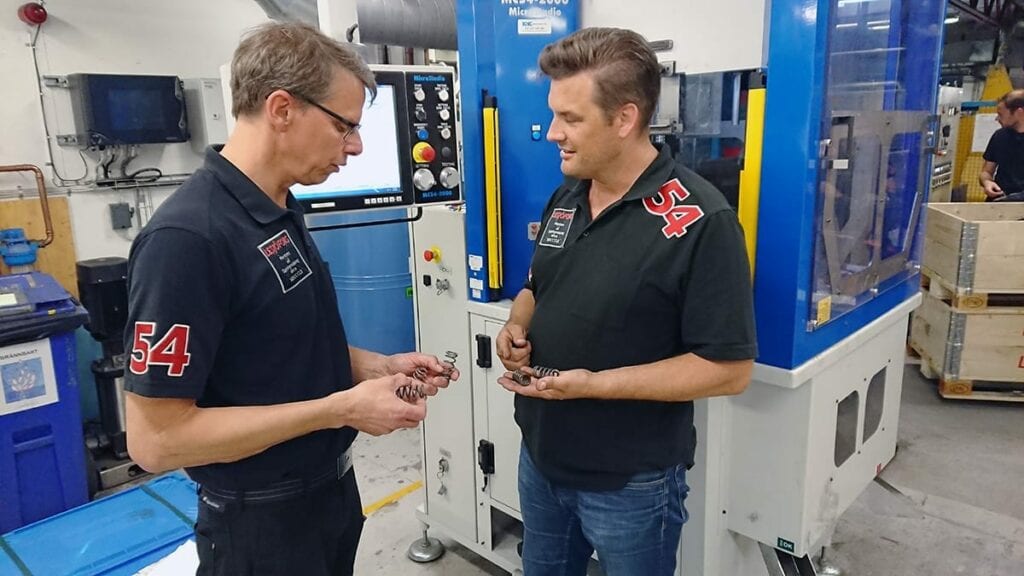Herrljunga, Sweden – Lesjöfors Industrifjädrar in Hudene, Västergötland, manufacture springs for a wide range of segments. One specialty is customized valve springs for tuned engines. Another customer in the racing and automotive industry is Öhlins Racing, a well-known customer to whom Lesjöfors has delivered front fork springs, shock absorber springs and many other springs for more than 20 years. For a customer base with extreme demands on the springs – regarding both tolerances, finish and performance – it is fundamental to stay at the technological forefront in order to maintain and develop the business.
Stefan Musslinder is technical manager of the Lesjöfors group and reveals the success factors behind an optimal spring:
“The characteristics of a spring depends on three factors; material, manufacturing process and design. Thanks to deep knowledge in all three areas, we can fulfill the specifications from our customer.”
The desired function determines construction and materials
Knowing the nature of a material and from that calculate wire diameter and number of windings is fundamental for the design of an optimal spring. There is a large variety of materials for different applications. Spring steel is among the hardest steel materials available, which is necessary to withstand the high mechanical stresses that occur in the springs of a vehicle. The ever-increasing demands on low weight and small built-in space mean that the springs must endure enormous stresses.
Processes for reducing fatigue
The manufacturing process is just as important as the material, since different treatments can add specific properties. After coiling, the springs are heat treated at 200-450 degrees Celsius depending on the material and type of spring application. In this so-called stress relieving, the internal stresses emit from the coiled spring. Following is the grinding process if the end surfaces are to be flat. This is actually a basic requirement for all compression springs, but is sometimes excluded for cost reasons in less complex spring applications.
For springs that must withstand a large number of load cycles during their lifetime – e.g. the valve springs in a combustion engine – shot peening is an important and critical process. By bombarding the surface with small, hard steel shots, stresses are implemented into the surface of the material. Shot peening can increase the spring’s strength by up to 50 times.
Developing calculation models
The last step – before any surface treatment, marking etc – is presetting, when the spring is fully compressed two or three times. If the spring is correctly designed, internal stresses are created in the wire that work against the load stresses from the spring’s normal use. Since the spring becomes shorter when compressed, the designer must calculate the right length of the spring wire at coiling.
“In order to manufacture optimal springs, we must develop the technology we need to be the market leader. Therefore we have developed the calculation model ourselves, since there are no academic spring research in Sweden today”, says Stefan Musslinder.
Enormous stresses on valve springs
For the particularly exposed valve spring that is subjected to rigorous stress, especially in trimmed motors, additional measures are sometimes required for it to withstand fatigue. Spring kits of two or three valve springs mounted concentrically in each other are often used. This reduces the load on the individual spring and is a well-functioning solution in the limited space where the spring works.
“The requirements are tough straight through, from processes that keep the steel clean, to surface treatment, tempering, grinding and shot peening. The last step is to hot preset the valve spring for it to cope with the extreme heat environment where it will work”, Stefan Musslinder concludes.


